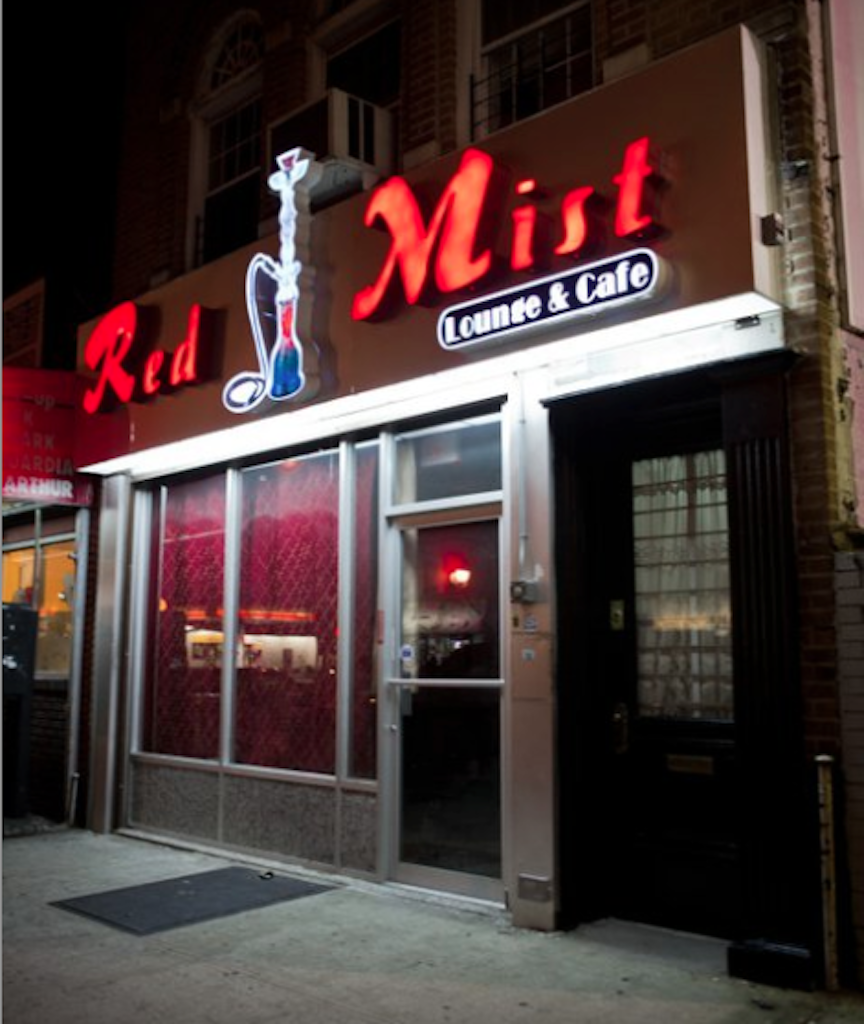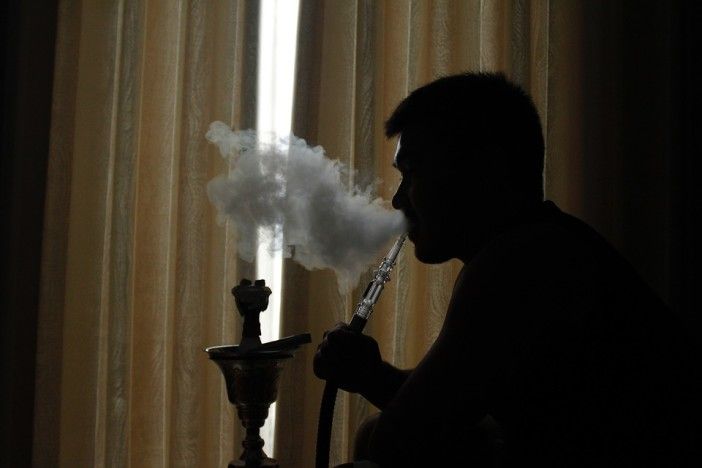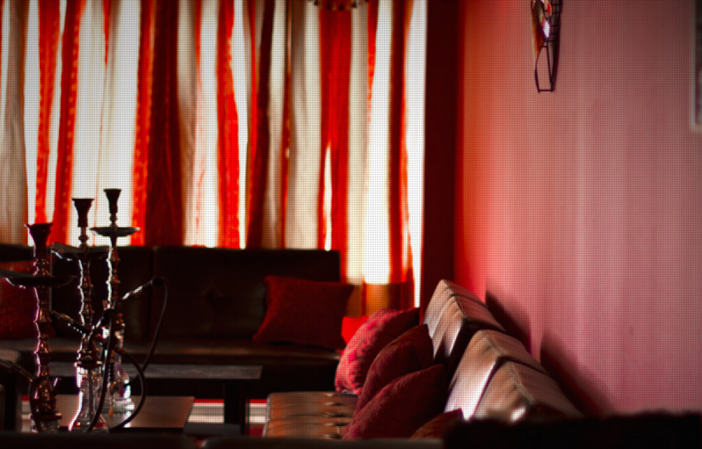Local Hookah Lounge Could Feel Impact Of Heightened Attention From Lawmakers


A centuries-old tradition — brought to our area by South Asian immigrants — is attracting attention from curious residents…and lawmakers.
As it approaches its fifth anniversary, the Red Mist Lounge enjoys a monopoly on a stretch of Coney Island Avenue that used to support three different hookah lounges. But even as it celebrates its success as an established neighborhood hangout, the lounge faces the possibility of increased restrictions on hookah businesses in New York.
The New York City Council is considering three different laws aimed at the industry that could come to a vote within the next month. One piece of legislation under consideration would add non-tobacco “shisa” — which is smoked at Red Mist — to the list of substances under the purview of New York’s Smoke-Free Air Act.
The City’s Department of Health has also raised concerns about non-tobacco shisha.
A hookah is a water pipe used for smoking sweetened tobacco, called shisha, through a hose. Smoking hookah has been enjoyed for hundreds of years in the countries of the Levant, including Palestine, Syria, Lebanon and parts of Turkey.
The practice spread to other regions and has become particularly popular in South Asia. Its arrival in the U.S. is relatively recent, along with the development of herbal shisha, in place of tobacco.

According to manager Mominul Mahim, the Red Mist was the first hookah lounge to open in Ditmas Park when the business debuted in August 2011.
Owner Nash Usman used to smoke hookah in the Steinway section of Queens, the first New York neighborhood where the lounges were successful. Though he was already employed in the Financial District, Usman decided the time was right to bring hookah to Brooklyn.
The Red Mist has built a business on neighborhood regulars who come in two or three times a week, Mahim said. Although hookah bars are legally allowed to apply for a liquor license, Usman decided early on, for religious reasons, to operate Red Mist without one. The lounge sells finger foods, including samosas and French fries, as well as coffee, tea, soda, juices and smoothies.
Beer, wine and liquor, however, are not on the menu.
Enjoyed By South Asians…And Now Other Brooklynites
That strategy — providing a night out to customers who may not want to drink alcohol — has kept the Red Mist in business while two other hookah bars in the neighborhood have come and gone. In its earlier years, clients were primarily South Asians from the blocks around the lounge, and Desis continue to supply most of the business.
On a recent Friday afternoon, an hour after the lounge opened at 4 PM, more than half the tables were filled, mostly with groups of young adults.
At one, four guys sharing a couple of hookahs were playing a game Mahim described as “the Desi version of Sorry,” and chess and cards are also popular. But Mahim said that in recent years, there has been increased diversity in his clientele, especially from African-Americans. “They see hookah bars in music videos or on social media and come in to try it out.”
Advice For First-Timers
Mahim recommends that first-timers take a “trial and error approach” to the lounge’s shisha menu, which includes almost 70 different flavors, all of which can be mixed and matched. Because so many of the lounge’s customers are regulars, Mahim explained, he can recognize a new face and offer advice.
“If someone orders watermelon mint, I might ask them if they’ve smoked shisha before, because that’s a strong flavor and may not be the best choice for someone who is smoking the first time.”
The lounge’s Classic selections are the cheapest ($11) and are typically fruit or other simple flavors, including apple, mango, chocolate and mint.
Premiums are more expensive ($16) blended flavors, some with fanciful names like Sponge Bob and Miami Vice. Specials ($20) are “super exotic,” according to Mahim, with Persian Sands, Queen of Sex and Fruity Pebbles all featured on the menu.

After ordering, a customer’s shisha is loaded in the hookah, and each member of the party gets a disposable mouthpiece for hygienic purposes. (Regulars don’t seem to bother with the mouthpieces, passing the hookah’s hose back and forth, and smoking directly from the stem.)
A single order of shisha can last two people an hour or more, depending on how often and how deeply they draw. Red Mist has an informal minimum of a hookah for every two people at a table, though if some members of a party are just eating or drinking, rather than smoking, they will waive the requirement.
To start the smoking, Mahim or one of the other employees lights a pair of charcoal cubes and puts them on top of a pierced foil that covers the bowl that holds the shisha. Inhaling on the pipe draws the smoke through the water at the bottom of the hookah, which cools and filters it before it reaches the smoker’s lungs.
https://www.youtube.com/watch?v=i2R58sQYekQ
Milk or fruit juice can be substituted for the water in the hookah. “Milk makes the smoke thicker,” Mahim explained, “and juice makes it sweeter.” Another popular option, especially in the summer, is a chilled hose or a “deezer” hose, which includes a frozen gel to really cool the smoke.
Employees keep an eye on the hookahs as smokers enjoy them, sometimes tapping the charcoals, sending sparks in the air and insuring that they continue to burn hot enough to produce smoke from the bowl.
Mahim also illustrated how to pull deeply and immediately breathe out smoke to clear stale fumes from the water — another service Red Mist employees are happy to perform for new smokers unfamiliar with the hookah routine.
City Councilmembers Raise Health Concerns
While keeping an eye on the hookahs, Red Mist managers also need to pay attention to the City Council these days. Vincent Gentile, who represents Bay Ridge, Dyker Heights and parts of Bensonhurst, was one of three councilmembers who presented legislation aimed at shisha at a Council hearing on February 25.
Advocates at the hearing pointed to a fact sheet from the Centers for Disease Control on the hazards of smoking hookah, although most of that document is aimed at the use of hookahs to consume tobacco, rather than the non-tobacco shisha that’s on the menu at Red Mist.
But the City’s Department of Health argues that non-tobacco shisha is also a health hazard.
“Regardless of whether it’s tobacco-based or non-tobacco-based hookah, we know that the products of the combustion, both the shisha and the charcoal that’s generally used to maintain the combustion, it emits…a variety of chemical mixes that are entirely consistent with every other kind of smoke that’s out there,” Daniel Kass, the department’s Deputy Commissioner, stated at the hearing, according to Gothamist.
“The one thing it’s missing is nicotine,” Kass added.
Mahim said he’s not worried about the legislation, and agreed that hookah smoking should be regulated to keep underage patrons away from shisha. “Everybody knows when you smoke something, you aren’t doing it for your health,” he said.
Gentile’s legislation would add non-tobacco shisha to the City’s ban on smoking, which would prevent new hookah bars from opening, but existing lounges would be grandfathered in, as long as they earned more than 50 percent of their revenue from smoking.
However, another bill, proposed by Councilmember Ydanis Rodriguez, would require that bars and restaurants that offer hookahs restrict the space where they can be smoked to 5 percent of their seating area.
[Rodriguez is proposing separate legislation requiring that shisha be sold only at hookah bars, tobacco bars, and tobacco stores.]
As a Gothamist article on the hearing pointed out, passing both the bills would make it very hard for any hookah business to succeed, as they would need to earn 50 percent of their revenue from 5 percent of their space.
Rodriguez’ legislation would also raise the legal age required to enter a hookah lounge from 18 to 21, conforming the limit to the current drinking age in New York City. That change could impact the Red Mist, as Mahim explained that young adults are the prime demographic for the lounge, although the crowd skews older for some parts of the day.
However, Mahim pointed out that many of the customers are already over 21 because the lounge’s no-alcohol policy makes it an attractive option for people who want a night out at a place that doesn’t serve liquor. It’s become especially popular as an alternative to sports bars.
The Red Mist has on occasion opened at special hours to accommodate cricket fans, as matches lasting five or more hours broadcast from Europe, Asia, South Africa and Australia end up airing in New York during the wee hours. “But we also have customers who come to watch basketball or hockey and smoke hookah,” Mahim said.




